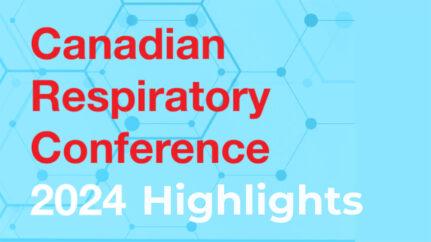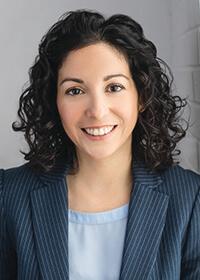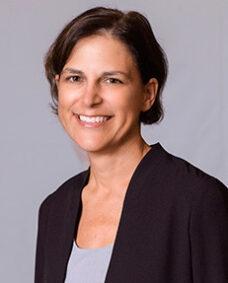
More than 55 experts delivered sessions on a vast array of research, covering a variety of respiratory diseases, such as COVID-19, asthma, COPD and ILD. Presentations were not recorded and were geared to respiratory health care professionals, however highlights of presentations may also interest anyone with a desire to learn about lung health.
Dr. Martin Kolb, Professor; Director, Division of Respirology, Jack Gauldie Boehringer Ingelheim Chair in Interstitial Lung Disease; Research Director, Firestone Institute for Respiratory Health
Dr. Kolb gave an overview of SSc-ILD, describing it as more rare and more straightforward then HP. It was more prevalent in women and as a vascular condition, multisystemic. When SSc affects the lungs, it can be fatal. It’s therefore important to monitor the lung health of SSc patients, who are often only in their 40s or 50s.
An early diagnosis is critical to better outcomes and a longer life. For more information on SSc-ILD watch the CPFF video with Dr. Shane Shapera.


Dr. Daniel Marinescu, University of British Columbia
Dr. Marinescu gave an overview of progressive pulmonary fibrosis (PFF) and the guidelines for diagnosis and treatment of the disease. He discussed some of the controversy surrounding the definition of PPF and whether the guideline was published too soon. He pointed out that it was actually released twice as long after the approvals of anti-fibrotics for IPF at two years. He said it was best to provide clinical judgement to help people as quickly as we can. Delaying such statements can be devastating for patients and helps clinicians to assess medications and informs them to determine whether their benefits outweigh any risks.
You can watch a video of Dr. Marinescu filmed when he was a CPFF Robert Davidson fellow between 2020 and 2022.
Dr. Deborah Assayag, Assistant Professor, McGill University
Dr. Assayag gave a spirited session on Advancing Early Diagnosis and Management of IDL and IPF: A path to better patient outcomes. She discussed the importance of early diagnosis, the benefits and limitations of medications and the practical considerations of disease management. She described the PF journey as a “marathon, not a sprint.” In discussing medications, she acknowledged that anti-fibrotics did slow the progression of the disease by up to 50 percent and reduced acute exacerbations and hospitalizations, but did not improve symptoms such as cough and breathlessness, or walk test results and quality of life. “My patients never say they feel better.” As for side effects, she did offer advice, such as changing the dose, or switching to the alternate anti-fibrotic, and or adding medications to deal with the side effects directly.


COVID 19 Beyond the Initial Illness: Impact, Function and Imaging
Dr. Andrea Gershon, Sunnybrook Health Sciences Centre, Toronto.
Dr. Gershon described her update of the Canadian Respiratory Research Network Long COVID Study,” as a “modern medical challenge.” So far, they’ve recruited 494 participants, who were at least six months after an acute COVID infection. Participants have completed 428 questionnaires and done 313 pulmonary function tests. Respiratory symptoms appear to be the same for those who were in hospital and those who were not. The most prevalent are fatigue and breathlessness at about 17 per cent. About 58 per cent are experiencing long COVID with respiratory symptoms. It is affecting their lives, with sleep and quality of life most affected.
Dr. Tania Janaudis-Ferreira, PhD. Associate Professor, McGill University.
Rehabilitation for Long COVID: Does it Help? Most participants had Long COVID for more than 12 months and most had one infection with the virus. All experienced PEM (post exertional malaise, or feeling unwell after physical or mental exertion). Participants were divided into those in an eight-week virtual rehab program and those in usual care to determine how to safely get back to physical activity. Did the rehab program help with recovery? Yes, but the program needs to be different from others of its kind, making adjustments and regressions if necessary to prevent the triggering of symptoms. It may be beneficial to increase the program duration to allow for recovery.


Dr. Grace Parraga, PhD. Lung Imaging Scientist, University of Western Ontario
Just months into the pandemic, Dr. Parraga co-initiated a study of the long-term impacts of the COVID-19 virus using a 3.0 Tesla MRI scanner to evaluate patients’ lung structure and function at 12 weeks, six months, one year and two years after the onset of infection. During her session, Dr. Parraga showed how this 3-D (three dimensional) scan – an MRI using an inhaled “noble” gas – revealed fibrosis in the lungs of people post COVID, that could not be seen on a usual CT scan. You can watch a YouTube video with Dr. Parraga talking about this type of scan for lung imaging.
Beyond the Guidelines: Overview of Hypersensitivity Pneumonitis, Systemic Sclerosis Associated Interstitial Lung Disease (SSc-ILD) and Progressive Pulmonary Fibrosis
Dr. Julie Morisset, Center Hospitalier de l’Université de Montréal
Dr. Morisset discussed a type of pulmonary fibrosis called Hypersensitivity Pneumonitis or HP, which she described as both complex and simple at the same time. Until the last two years, there were no guidelines for the management of this disease, and now there are two guidelines, which can be confusing. In general, HP is “immune mediated,” like an allergic reaction to some environmental exposure – often feathers, foam or mould. Along with imaging, a blood test can help identify certain exposures, but the sensitivity is low. A thorough questioning about work and home environments can help with determining a triggering exposure. It is important for clinicians to consider HP as a possibility when diagnosing PF.



